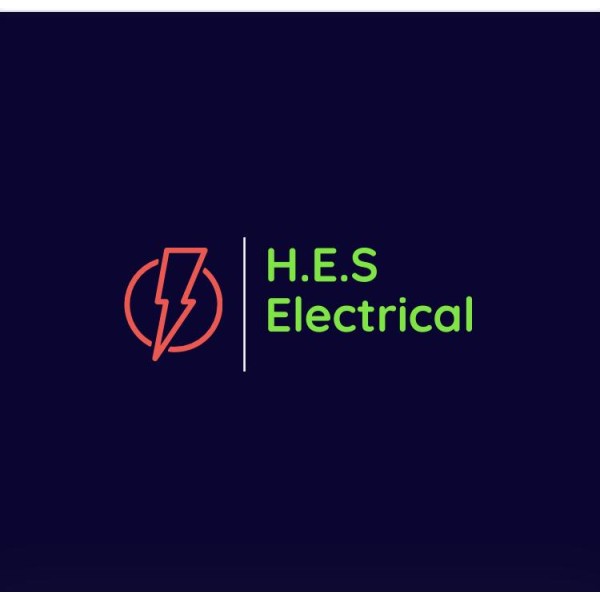Renewable Energy Solutions in the UK
Search Renewable Energy Solutions by county
- Renewable Energy Solutions in London
- Renewable Energy Solutions in Bedfordshire
- Renewable Energy Solutions in Berkshire
- Renewable Energy Solutions in Bristol
- Renewable Energy Solutions in Buckinghamshire
- Renewable Energy Solutions in Cambridgeshire
- Renewable Energy Solutions in Cheshire
- Renewable Energy Solutions in Cornwall
- Renewable Energy Solutions in County Durham
- Renewable Energy Solutions in Cumbria
- Renewable Energy Solutions in Derbyshire
- Renewable Energy Solutions in Devon
- Renewable Energy Solutions in Dorset
- Renewable Energy Solutions in East Riding of Yorkshire
- Renewable Energy Solutions in East Sussex
- Renewable Energy Solutions in Essex
- Renewable Energy Solutions in Gloucestershire
- Renewable Energy Solutions in Greater Manchester
- Renewable Energy Solutions in Hampshire
- Renewable Energy Solutions in Herefordshire
- Renewable Energy Solutions in Hertfordshire
- Renewable Energy Solutions in Isle of Wight
- Renewable Energy Solutions in Isles of Scilly
- Renewable Energy Solutions in Kent
- Renewable Energy Solutions in Lancashire
- Renewable Energy Solutions in Leicestershire
- Renewable Energy Solutions in Lincolnshire
- Renewable Energy Solutions in Merseyside
- Renewable Energy Solutions in Norfolk
- Renewable Energy Solutions in North Yorkshire
- Renewable Energy Solutions in Northamptonshire
- Renewable Energy Solutions in Northumberland
- Renewable Energy Solutions in Nottinghamshire
- Renewable Energy Solutions in Oxfordshire
- Renewable Energy Solutions in Rutland
- Renewable Energy Solutions in Shropshire
- Renewable Energy Solutions in Somerset
- Renewable Energy Solutions in South Yorkshire
- Renewable Energy Solutions in Staffordshire
- Renewable Energy Solutions in Suffolk
- Renewable Energy Solutions in Surrey
- Renewable Energy Solutions in Tyne and Wear
- Renewable Energy Solutions in Warwickshire
- Renewable Energy Solutions in West Midlands
- Renewable Energy Solutions in West Sussex
- Renewable Energy Solutions in West Yorkshire
- Renewable Energy Solutions in Wiltshire
- Renewable Energy Solutions in Worcestershire
Introduction to Renewable Energy Solutions
Renewable energy solutions are becoming increasingly vital in today's world as we strive to combat climate change and reduce our dependence on fossil fuels. These solutions harness natural resources that are replenished constantly, such as sunlight, wind, and water, to generate energy. By transitioning to renewable energy, we can create a sustainable future that benefits both the environment and the economy. In this article, we'll explore various renewable energy solutions, their benefits, and how they can be implemented effectively.
The Importance of Renewable Energy
Renewable energy is crucial for several reasons. Firstly, it helps reduce greenhouse gas emissions, which are a major contributor to global warming. By using renewable sources, we can significantly decrease our carbon footprint. Secondly, renewable energy sources are abundant and sustainable, unlike fossil fuels, which are finite and depleting rapidly. Lastly, renewable energy can enhance energy security by reducing reliance on imported fuels, thus stabilising energy prices and fostering economic growth.
Environmental Benefits
One of the most significant advantages of renewable energy solutions is their positive impact on the environment. Unlike fossil fuels, renewable energy sources produce little to no emissions, helping to improve air quality and reduce pollution. This, in turn, leads to healthier ecosystems and communities. Additionally, renewable energy projects often require less land and water than traditional energy sources, further minimising their environmental footprint.
Economic Advantages
Renewable energy solutions also offer numerous economic benefits. They create jobs in manufacturing, installation, and maintenance, contributing to local economies. Moreover, as technology advances, the cost of renewable energy continues to decrease, making it more accessible and affordable for consumers. Investing in renewable energy can also stimulate innovation and drive economic growth by encouraging the development of new technologies and industries.
Types of Renewable Energy Solutions
There are several types of renewable energy solutions, each with its unique characteristics and applications. Let's delve into some of the most common and promising options available today.
Solar Energy
Solar energy is one of the most widely used renewable energy sources. It involves capturing sunlight and converting it into electricity using photovoltaic (PV) cells or solar thermal systems. Solar panels can be installed on rooftops, in solar farms, or even integrated into building materials. This versatility makes solar energy an attractive option for both residential and commercial applications.
Photovoltaic Systems
Photovoltaic systems use solar panels made of semiconductor materials to convert sunlight directly into electricity. These systems are highly efficient and can be scaled to meet various energy needs, from small residential installations to large utility-scale projects. Advances in PV technology have led to increased efficiency and reduced costs, making solar energy more accessible than ever.
Solar Thermal Systems
Solar thermal systems capture sunlight to generate heat, which can be used for various applications, such as heating water or powering turbines to produce electricity. These systems are particularly effective in regions with abundant sunlight and can be integrated into existing infrastructure to enhance energy efficiency.
Wind Energy
Wind energy harnesses the power of the wind to generate electricity using wind turbines. These turbines can be installed on land or offshore, where wind speeds are typically higher and more consistent. Wind energy is a rapidly growing sector, with advancements in turbine technology leading to increased efficiency and reduced costs.
Onshore Wind Farms
Onshore wind farms are typically located in rural areas with ample wind resources. They consist of multiple wind turbines connected to the grid, providing a reliable and cost-effective source of electricity. Onshore wind energy is one of the most competitive renewable energy sources, with costs continuing to decline as technology improves.
Offshore Wind Farms
Offshore wind farms are situated in bodies of water, where wind speeds are generally higher and more consistent than on land. These projects can generate significant amounts of electricity, making them an attractive option for densely populated coastal regions. While offshore wind farms are more expensive to develop and maintain, their potential for large-scale energy production is immense.
Hydropower
Hydropower is a well-established renewable energy solution that uses the flow of water to generate electricity. It is one of the most reliable and efficient renewable energy sources, providing a steady supply of power with minimal environmental impact.
Run-of-the-River Systems
Run-of-the-river systems generate electricity by diverting a portion of a river's flow through a turbine, without the need for large dams or reservoirs. These systems have a lower environmental impact than traditional hydropower projects and can be implemented in a variety of settings, from small streams to large rivers.
Pumped Storage
Pumped storage is a type of hydropower that stores energy by pumping water from a lower reservoir to an upper reservoir during periods of low electricity demand. When demand is high, the stored water is released to generate electricity. This technology provides a reliable and flexible source of energy, helping to balance supply and demand on the grid.
Emerging Renewable Energy Technologies
In addition to established renewable energy solutions, several emerging technologies hold promise for the future. These innovations have the potential to revolutionise the energy landscape and further reduce our reliance on fossil fuels.
Geothermal Energy
Geothermal energy harnesses the heat from beneath the Earth's surface to generate electricity and provide heating and cooling. This renewable energy source is highly efficient and can provide a constant supply of power, making it an attractive option for baseload energy generation.
Enhanced Geothermal Systems
Enhanced geothermal systems (EGS) involve creating artificial reservoirs by injecting water into hot, dry rock formations. This technology has the potential to significantly expand the availability of geothermal energy, making it accessible in regions without natural geothermal resources.
Biomass Energy
Biomass energy is derived from organic materials, such as plants, agricultural waste, and wood. It can be used to produce electricity, heat, and biofuels, offering a versatile and sustainable energy solution.
Bioenergy with Carbon Capture and Storage
Bioenergy with carbon capture and storage (BECCS) is a technology that combines biomass energy production with carbon capture and storage to reduce greenhouse gas emissions. This approach has the potential to achieve negative emissions, making it a valuable tool in the fight against climate change.
Implementing Renewable Energy Solutions
Successfully implementing renewable energy solutions requires a combination of policy support, technological innovation, and public engagement. By addressing these key areas, we can accelerate the transition to a sustainable energy future.
Policy and Regulation
Government policies and regulations play a crucial role in promoting renewable energy solutions. Incentives, such as tax credits and subsidies, can encourage investment in renewable energy projects, while regulations can set targets for renewable energy adoption and emissions reductions.
Technological Innovation
Advancements in technology are essential for the continued growth of renewable energy solutions. Research and development efforts should focus on improving the efficiency and cost-effectiveness of existing technologies, as well as exploring new and innovative solutions.
Public Engagement and Education
Public engagement and education are vital for fostering support for renewable energy solutions. By raising awareness of the benefits of renewable energy and addressing misconceptions, we can encourage individuals and communities to embrace sustainable energy practices.
Challenges and Opportunities
While renewable energy solutions offer numerous benefits, they also present challenges that must be addressed to ensure their successful implementation. By understanding these challenges and identifying opportunities, we can work towards a more sustainable energy future.
Intermittency and Grid Integration
One of the primary challenges of renewable energy solutions is their intermittency, as sources like solar and wind are dependent on weather conditions. To address this issue, we must invest in energy storage technologies and grid infrastructure to ensure a reliable and stable energy supply.
Financing and Investment
Securing financing and investment for renewable energy projects can be challenging, particularly for emerging technologies. By developing innovative financing models and leveraging public-private partnerships, we can attract the necessary investment to support the growth of renewable energy solutions.
Global Collaboration
Addressing the challenges of renewable energy solutions requires global collaboration and cooperation. By sharing knowledge, resources, and best practices, countries can work together to accelerate the transition to a sustainable energy future.
Frequently Asked Questions
- What are renewable energy solutions? Renewable energy solutions are methods of generating energy from natural resources that are constantly replenished, such as sunlight, wind, and water.
- Why are renewable energy solutions important? They are important because they help reduce greenhouse gas emissions, are sustainable, and enhance energy security by reducing reliance on imported fuels.
- What are some common types of renewable energy? Common types include solar energy, wind energy, and hydropower.
- What are the benefits of solar energy? Solar energy is abundant, sustainable, and can be used in various applications, from residential to commercial.
- How does wind energy work? Wind energy uses wind turbines to convert the kinetic energy of the wind into electricity.
- What are the challenges of implementing renewable energy solutions? Challenges include intermittency, financing, and the need for global collaboration.
Final Thoughts
Renewable energy solutions are essential for creating a sustainable future. By harnessing the power of natural resources, we can reduce our reliance on fossil fuels, decrease greenhouse gas emissions, and promote economic growth. While challenges remain, the opportunities for innovation and collaboration are immense. By working together, we can accelerate the transition to a cleaner, greener energy future for generations to come.



































